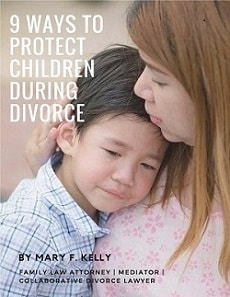Recent studies show that after a divorce, children prefer—and fare better—having open access to both parents. “Open access” means frequent, unrestricted access to the noncustodial parent, if one parent has primary physical custody. This sounds ideal. But is open access realistic for most people?
Access and visitation
The traditional visitation (also called “access”) schedule for many noncustodial parents has been one weekday (evening) and every other weekend, plus a share of holidays and vacation time. In the last ten years, some of my clients have been setting up schedules with more frequent visitation, such as a few evenings or even overnights during the week, and flexible access time with the noncustodial parent almost every weekend. Other families with teenagers have decided not to create a formal schedule, but to arrange visitation month by month or as they go, with input from the children. Such arrangements work when parents can cooperate and be flexible. These could be called “open access” arrangements.
However, this access arrangement is not for all. Many parents both want as much time as possible with their children, and while they may set up schedules with fairly frequent access, they cannot avoid disputes and conflict. They infringe on each other’s access time, disparage each other in front of the children, and engage in parental alienation (aligning the children with oneself, against the other parent). They sometimes pursue further legal battles for enforcement of the visitation schedule or for sole custody. Their children suffer as a result.
What about equal parenting?
Another custody/access model is “equal parenting.” On Tuesday in North Dakota, a ballot measure was defeated that would have mandated equal parenting rights and equal custody of children in a divorce, unless domestic abuse or substance abuse is a factor. “Equal parenting,” like open access, is an effort to share custodial access evenly between parents. Opponents say the bill is focused on parents’ rights instead of what’s best for the child, and could lead to children splitting their time between different cities, or even states.
The push for equal parenting reflects the increasing role many fathers play in parenting today and want to continue to play after divorce. In some jurisdictions, there are valid complaints that the courts favor mothers when choosing a custodial parent. However, there are other factors—parents’ work schedules, how far apart they live, and the ages and needs of the children—that affect whether equal parenting is possible or ideal in each case. Lack of financial resources can make it difficult for each parent to provide adequate living quarters that would allow children to stay overnight and for longer periods of time. A mandatory 50/50 division of access and custody would not allow these factors to be considered.
What is best for children
Both open access and equal parenting are positive access models and, when parents can communicate amicably and make ongoing decisions about their children with minimal conflict, these models for custody planning should be considered. Open access and equal parenting work when both parents have some emotional flexibility and resilience and are able to respect and empathize with each other.
If these models would not or do not work for you, do not despair. If your children will have better parenting and quality time with you and your ex-spouse when there is a defined schedule, then work with that model. For children, it is not just the amount of time spent with a parent. Consistency in scheduling, quality time, loving and shared experiences, unconditional love—these matter more to children than 50/50 division of time.
Copyright © 2014 Kelly & Knaplund




